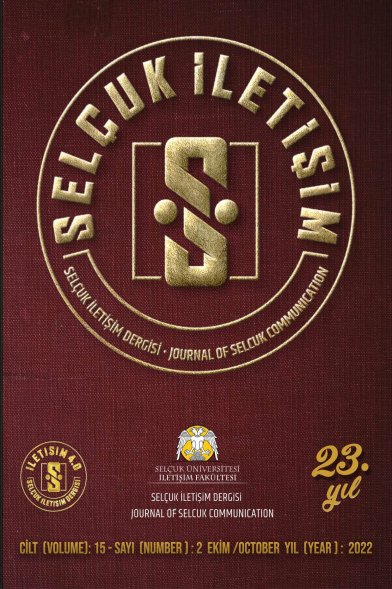Görsel-işitsel iletişim alanının düzenlenmesinde yeni eğlimler ve rütük
New trends in the regulation of the oudio-visual communication area
___
- Barbrook R (1995) Media Freedom: The Contradictions of Communication in The Age of Modernity, Pluto Pres, London.
- Çakır H (2007) Gazeteciliğe Giriş, Tablet Yayınları, Konya.
- Çiftçi A (1999) Radyo ve Televizyon Hukuku, Gazi Üniversitesi İletişim Fakültesi Yayınları, Ankara.
- http://www.fcc.gov/Reports/1934new.pdf/18. 09.2007
- http://www.opsi.gov.uk/acts/acts2003/20030 021.htm/18.09.2007
- Işık M (2002) İletişim Sistemleri Siyasal Sistem İlişkileri Bağlamında İletişim Alanının Düzenlenmesi ve Medya-Devlet İlişkilerinin Değerlendirilmesi, Selçuk İletişim Derg, 2 (2), 23-34.
- Işık M (2007) Türkiye ve Dünya Bağlamında Kitle İletişim Sistemleri, Eğitim Kitabevi, Konya.
- Grossberg L ve ark. (1998) Media Making, Mass Media in a Popular Culture, Sage Publications, London.
- Noll R R ve ark. (1973) Economic Aspects of Television Regulation, The Brookins Institution, Washington.
- Pember D R (1987) Mass Media Law, Dubique, C. Brown.
- Peterson T (1963) The Social Responsibility Theory of The Press, The Four Theory of The Press, Universty of Illinois Pres, Urbana.
- Rivera-Sanchez M (2000) Broadcast Regulation, Communication and The Law, W Hopkins (eds.), Vision Pres, Alabama.
- Robillard S (1995) Status, Functions and Powers in 35 Europer an Countries, John Libbey Company.
- Siebert S F ve ark. (1963) The Four Theories of The Press, Universty of Illinois Pres, Urbana.
- Wilson S L R (1995) Mass Media Mass Culture, McGraw Hill College, New York.
- Wolton D (1992) Values and Normative Choices in French Television, Television and The Public Interest: Vulnerable Values in West European Broadcasting, Blumler G. Jay, (ed.) Sage Publications, London.
- www.epra.org/18.09.2007
- www.csa.fr/18.09.2007
- Yayın Aralığı: 2
- Başlangıç: 1999
- Yayıncı: Selçuk Üniversitesi İletişim Fakültesi
Endüstrileşme Olgusu ve Endüstriyel Reklamcılık
Sembolik/retoriksel bir eylem olarak dil'in anlam inşasındaki aracılık işlevi
''Hatırla sevgili''dizisindeki temsili ile bir dönemim anatomisi 27 Mayıs 1960
''Underground'' filmler ve andy warhol sineması
Anlatıcı kavramı, sinematografideanlatıcı tipolojisi ve örnek çözümler
Pazarlama iletişimi ve basketbol pazarlaması ''Basketbol seyircisi üzerine bir araştırma''
Türk Dergi Reklamlarında Cinsellik: Önyargı Ya Da Gerçeğin Yansıması
Ülke Orijini Kavramı ve Ülke İmajı
Türk Sinemasında Hegemonik Erkeklikten Erkeklik Krizine: Yazı-Tura ve Erkeklik Bunalımının Sınırları
